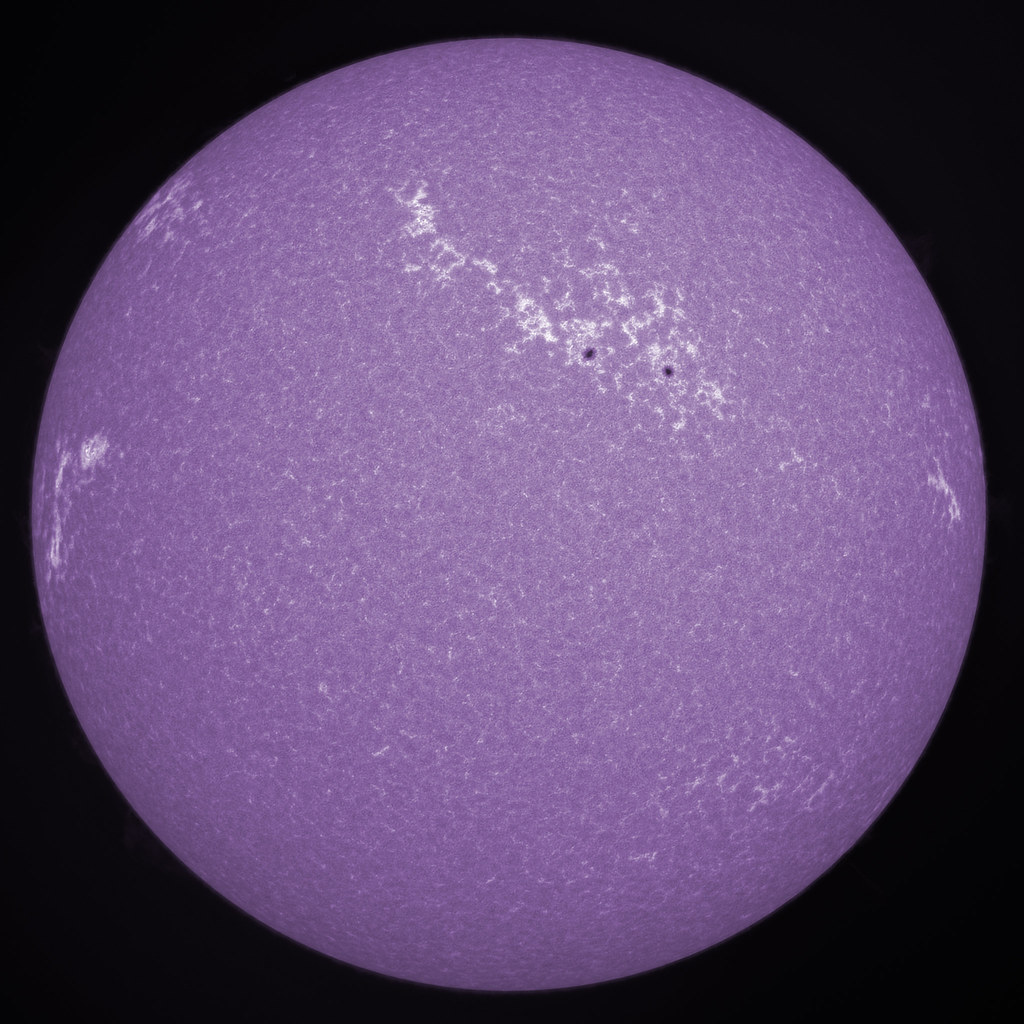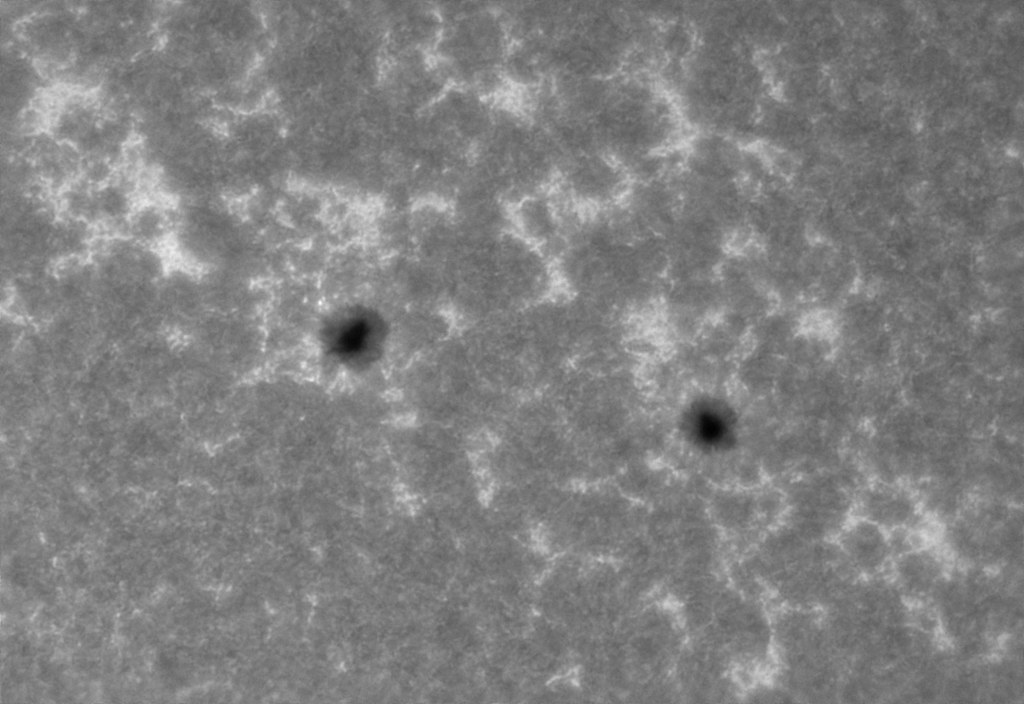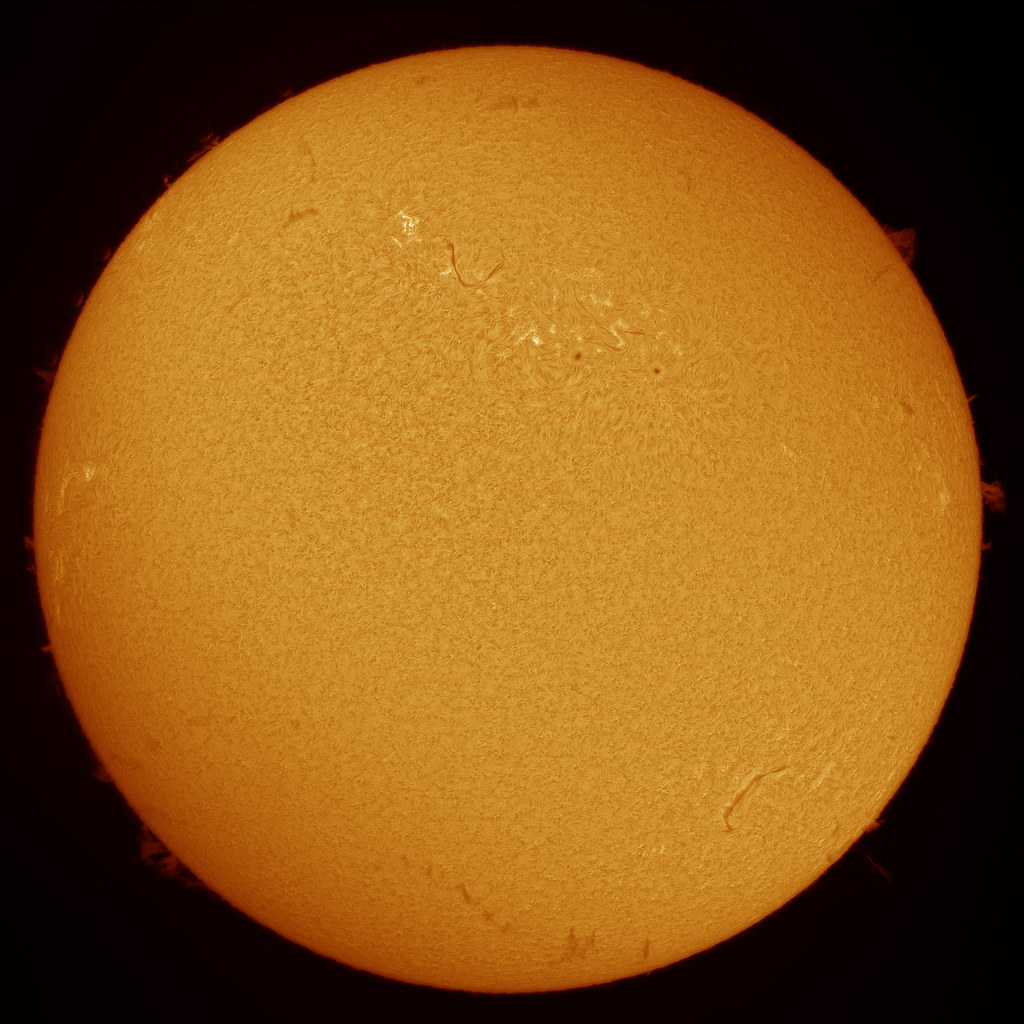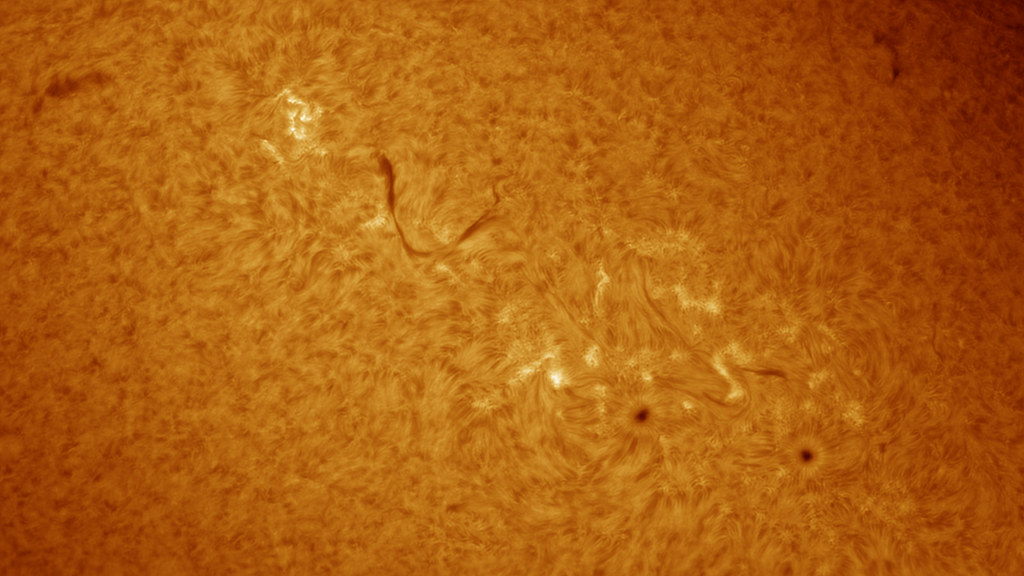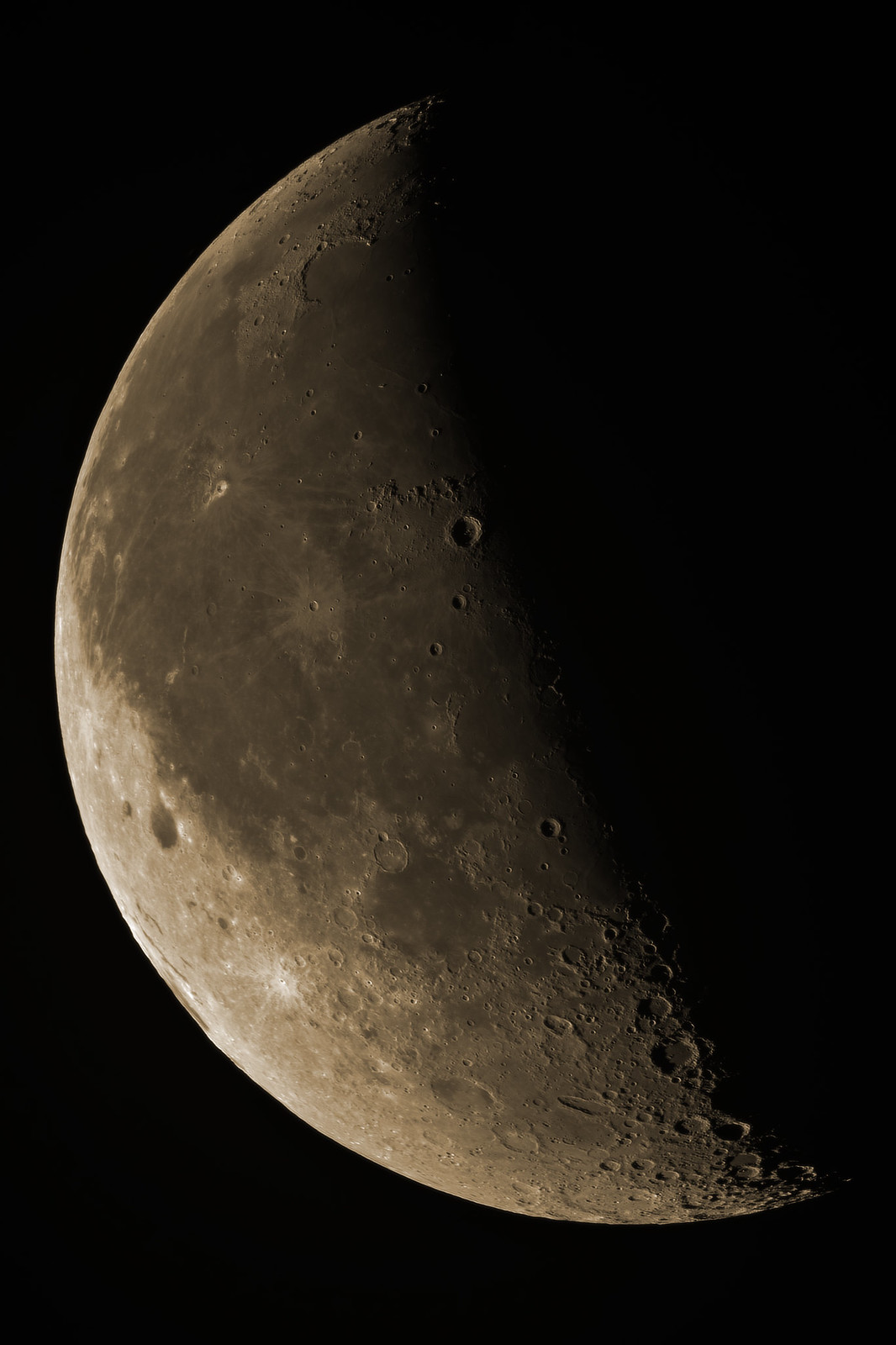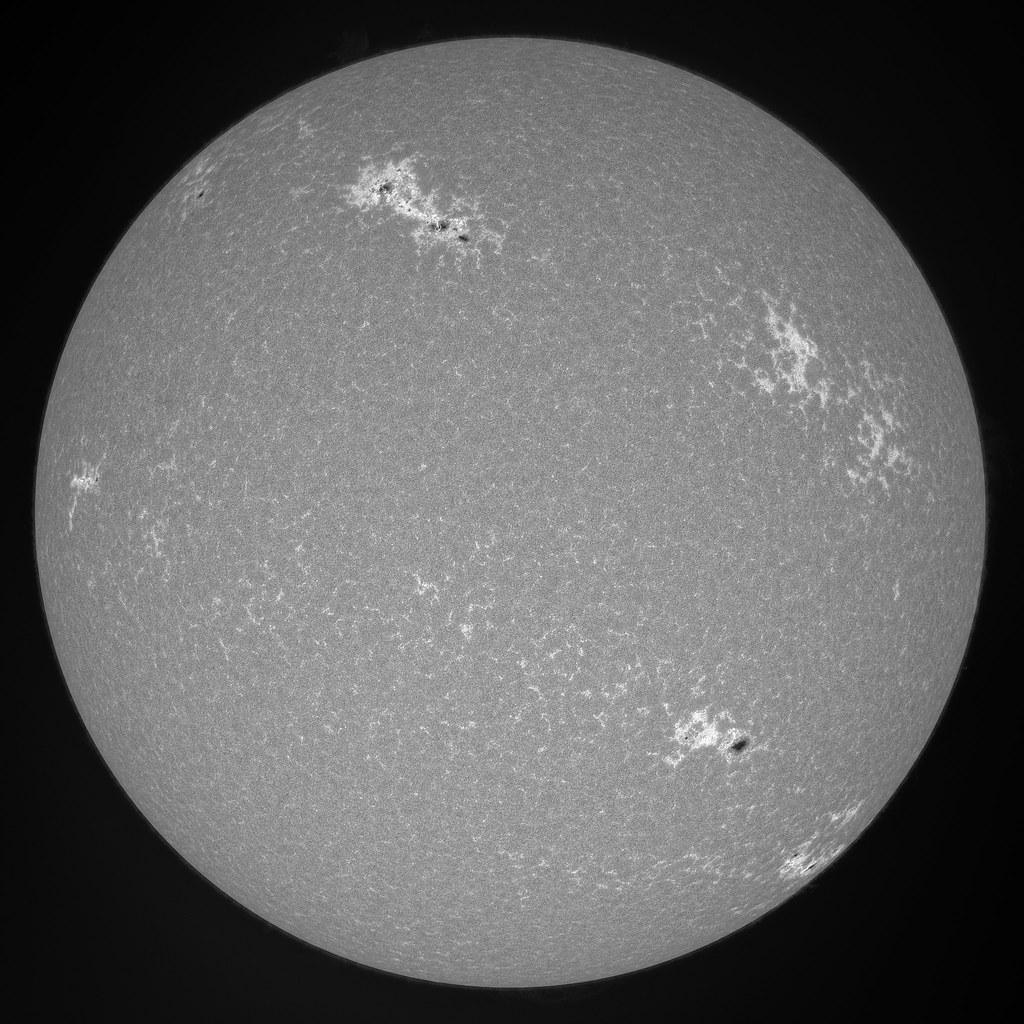 There was just enough of a break in scudding clouds today to allow a quick fiull disk. A clear airstream meant the chromospheric fringe and proms were quite easily visible. Taken with the LZOS 100/800 stopped down to 50mm to give f16 at the filter.
There was just enough of a break in scudding clouds today to allow a quick fiull disk. A clear airstream meant the chromospheric fringe and proms were quite easily visible. Taken with the LZOS 100/800 stopped down to 50mm to give f16 at the filter.
Saturday, 12 March 2022
CaK Full Disk 12th March
 There was just enough of a break in scudding clouds today to allow a quick fiull disk. A clear airstream meant the chromospheric fringe and proms were quite easily visible. Taken with the LZOS 100/800 stopped down to 50mm to give f16 at the filter.
There was just enough of a break in scudding clouds today to allow a quick fiull disk. A clear airstream meant the chromospheric fringe and proms were quite easily visible. Taken with the LZOS 100/800 stopped down to 50mm to give f16 at the filter.
Solar Overview - 27th February
Friday, 4 March 2022
CaK Single Stack Double Stack Comparison 26th February
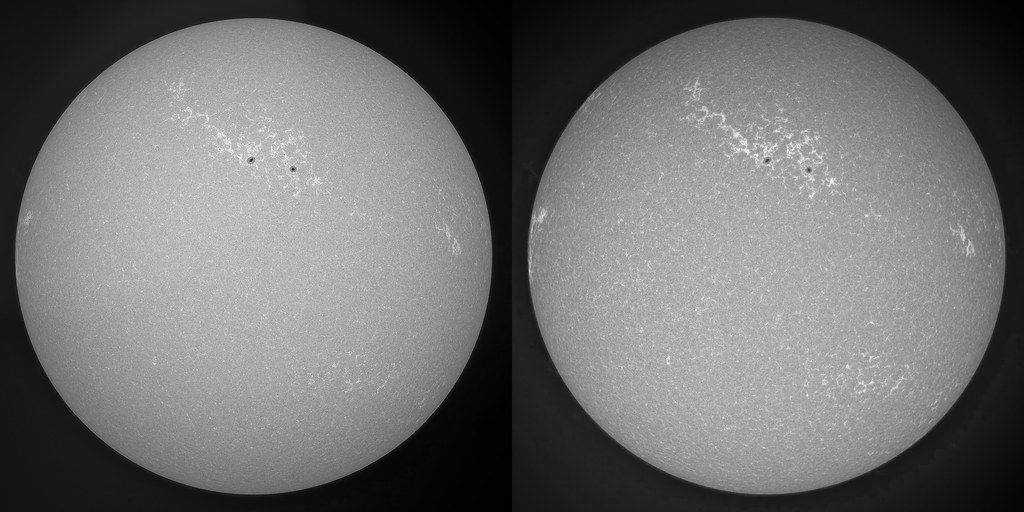 Hazy skies for much of the day thinned somewhat in the afternoon on Saturday so I decided to go out in the warming spring sunshine and see what I could see on the sun. Using the 100/800 scope stopped to 50mm to give f16 for the full disks and the difference between single stack and double stack cak is easy to see.
I'm using my regular double stack CaK setup, but last year purchased another CaK PST to harvest the magic filter from it with the idea of triple stacking. There is little returns with TS over DS apart from much reduced exposure times so I will stick to DS. Sooooo, I have a single stack CaK filter module in addition now to compare alongside. I think I can improve the single stack further yet, more blocking will help.
We can see that the chromospheric network is brighter. At the same time, this network is a bit more fuzzier since we sample a higher level of the chromosphere (compared to the single stack Ca K). The contrast between the penombra and umbra is also lower, for the same reason.
Hazy skies for much of the day thinned somewhat in the afternoon on Saturday so I decided to go out in the warming spring sunshine and see what I could see on the sun. Using the 100/800 scope stopped to 50mm to give f16 for the full disks and the difference between single stack and double stack cak is easy to see.
I'm using my regular double stack CaK setup, but last year purchased another CaK PST to harvest the magic filter from it with the idea of triple stacking. There is little returns with TS over DS apart from much reduced exposure times so I will stick to DS. Sooooo, I have a single stack CaK filter module in addition now to compare alongside. I think I can improve the single stack further yet, more blocking will help.
We can see that the chromospheric network is brighter. At the same time, this network is a bit more fuzzier since we sample a higher level of the chromosphere (compared to the single stack Ca K). The contrast between the penombra and umbra is also lower, for the same reason.
Saturday, 26 February 2022
Calcium Sun 25th February
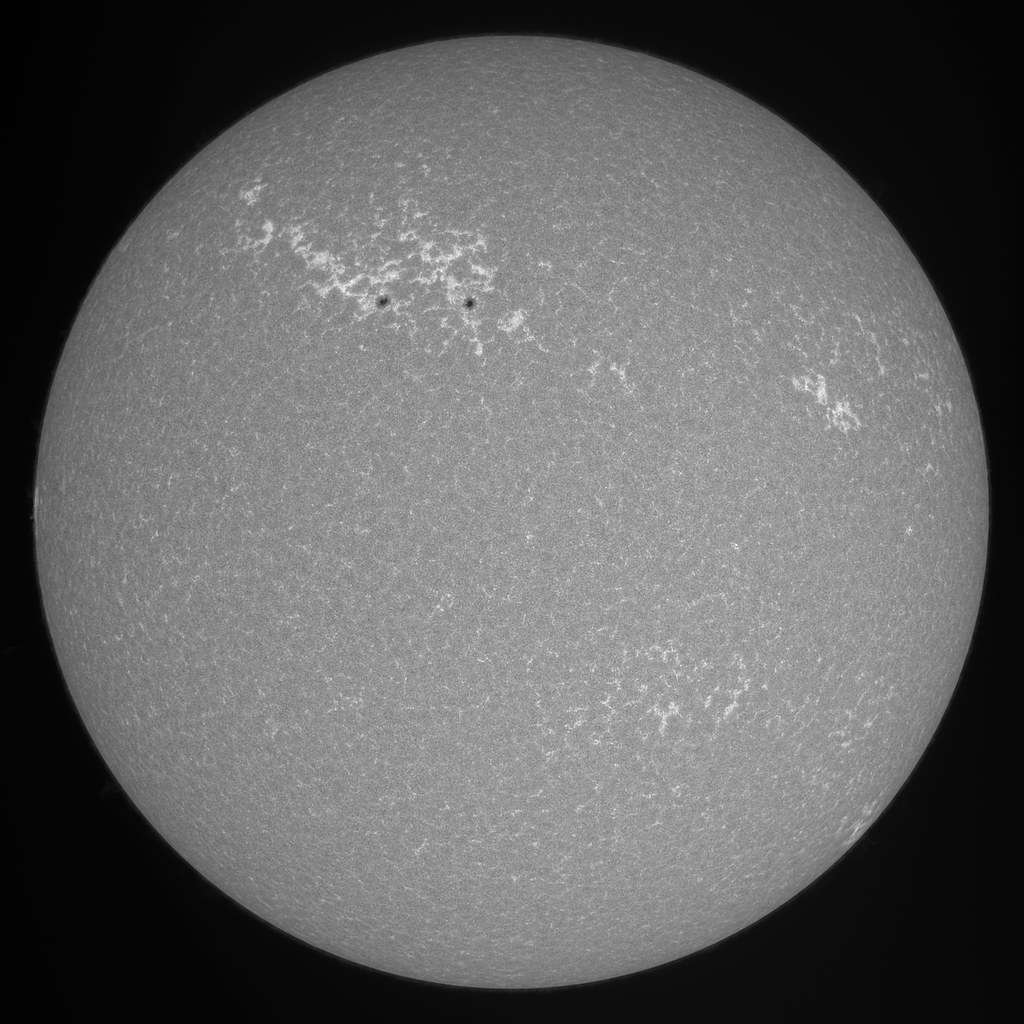
 The last time I was able to observe the sun was 3rd October, and after this near 5 month solar drought in a particularly cloudy winter I was finally able to get a view in. The full disk was taken with the 100/800 LZOS running at 50mm f16 as this sampling works nicely with the large chipped PGR camera. The closeup wasn't really up to the seeing that I had, and this was shot again with the 100/800 LZOS running at 80mm f10 along with the Airylab 2.7x telecentric, the homebrew CaK filter and the ZWO 290mm camera. I have lot of hope with this setup when conditions improve!
The last time I was able to observe the sun was 3rd October, and after this near 5 month solar drought in a particularly cloudy winter I was finally able to get a view in. The full disk was taken with the 100/800 LZOS running at 50mm f16 as this sampling works nicely with the large chipped PGR camera. The closeup wasn't really up to the seeing that I had, and this was shot again with the 100/800 LZOS running at 80mm f10 along with the Airylab 2.7x telecentric, the homebrew CaK filter and the ZWO 290mm camera. I have lot of hope with this setup when conditions improve!
Sunday, 5 December 2021
Gibbous Moon 28th November
Sunday, 21 November 2021
Near Full Moon 21st November
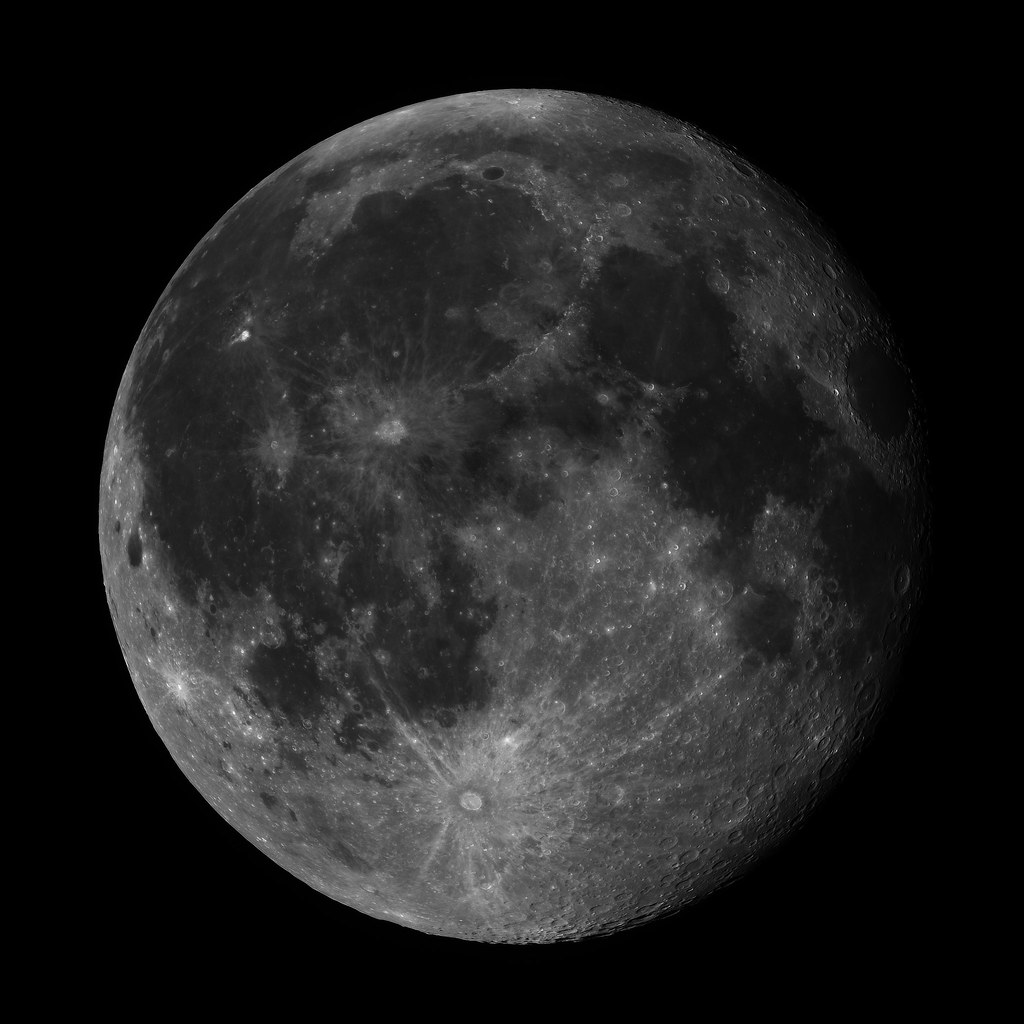 The weather seems to have been cloudy for weeks here as we slip from autumn towards winter. Reflected sunlight today, and I was keen to try my New LZOS100/800 refractor on the moon. Visually there was oodles of contrasted detail that could be seen and I spent some time taking in the view. Optically the refractor is as close to perfect as you can get and is quick to show up the failings of eyepieces. This image was taken at prime focus using the FLIR GH3 U3 91S6M camera.
The weather seems to have been cloudy for weeks here as we slip from autumn towards winter. Reflected sunlight today, and I was keen to try my New LZOS100/800 refractor on the moon. Visually there was oodles of contrasted detail that could be seen and I spent some time taking in the view. Optically the refractor is as close to perfect as you can get and is quick to show up the failings of eyepieces. This image was taken at prime focus using the FLIR GH3 U3 91S6M camera.
Tuesday, 2 November 2021
Reykjavik Auroras - 30th October 2021
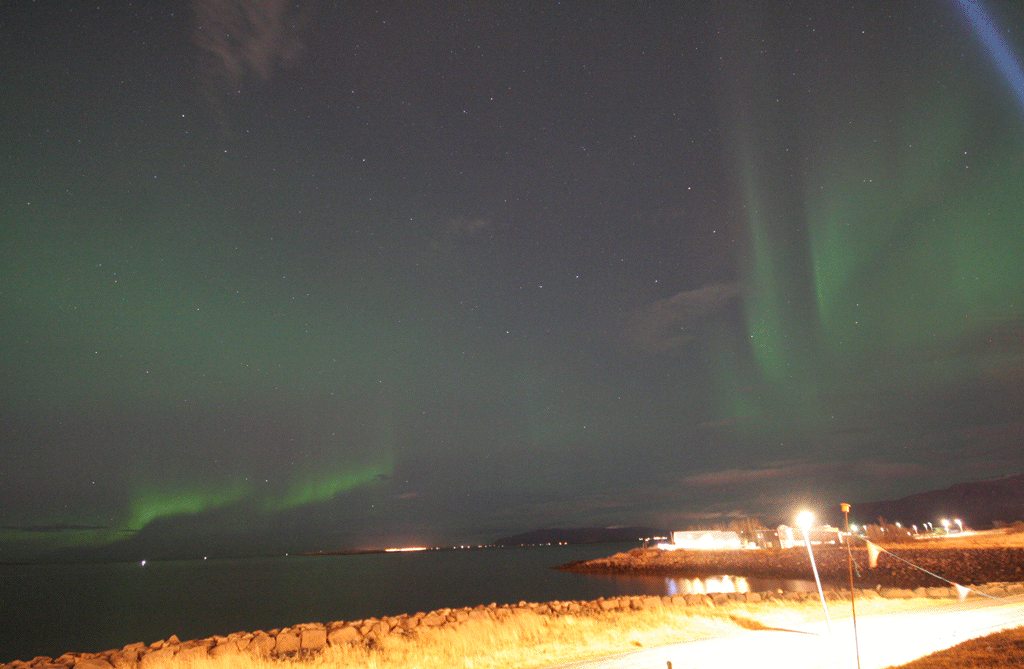 It was the 'super storm' that wasn't last night. NASA boffins predicted the Coronal Mass Ejection would hit at 18:00ut with auroras lasting for days. It didn't, it may have not even arrived yet, what did hit was a glancing blow from another solar flare that occurred earlier in the week, hitting at more like 22:00ut. For about an hour and half the sky was wild with aurora, but then by midnight it had died right off, and by 05:00ut all that remained was a quiescent green arc. This time lapse is over about 10 minutes at around 22:30ut. Despite the bright lights of Reykjavik it was still seen reflecting in the waters of the bay. Just glad we managed to finish our week with aurora. After taking these shots it was time to head back to the hotel for 3 hours sleep before having to get the shuttle back to the airport... Good times!
It was the 'super storm' that wasn't last night. NASA boffins predicted the Coronal Mass Ejection would hit at 18:00ut with auroras lasting for days. It didn't, it may have not even arrived yet, what did hit was a glancing blow from another solar flare that occurred earlier in the week, hitting at more like 22:00ut. For about an hour and half the sky was wild with aurora, but then by midnight it had died right off, and by 05:00ut all that remained was a quiescent green arc. This time lapse is over about 10 minutes at around 22:30ut. Despite the bright lights of Reykjavik it was still seen reflecting in the waters of the bay. Just glad we managed to finish our week with aurora. After taking these shots it was time to head back to the hotel for 3 hours sleep before having to get the shuttle back to the airport... Good times!
Subscribe to:
Posts (Atom)

